Carl E. Olson's Blog, page 141
July 25, 2013
The Arab Springtime is a Nightmare for Syrian Christians

The Arab Springtime is a Nightmare for Syrian Christians | Alessandra Nucci | CWR
Middle Eastern Christians decry how Western media misrepresent the increasingly violent events in Syria.
Now that Syria is in shambles—with an estimated 93,000 dead, 1.5 million
refugees, and 4.5 million internally displaced; ancient churches torched,
destroyed, or vandalized; Christians targeted for murder and kidnapping and
even used as human shields—now the mainstream media is starting to admit that,
yes, the rebel forces appear to include quite a few Islamist guerrillas. Now
that even chemical warfare has made its appearance, with Carla Del Ponte, a
member of the International Commission of
Inquiry on Syria, confirming that “the chemical weapons are being used by the
rebels, not the men faithful to Bashar al Assad”; now that clergy are being
kidnapped, with still no word of kidnapped bishops Yohanna Ibrahim and Boulos Yazigi and with the beheading of a
cleric by Islamist rebels available on YouTube for all to see—now the London-based Syrian Observatory
for Human Rights has started including some jihadist rebel atrocities in their
reports.
Now that women are having to cover up with the abaya,
or at least keep a veil handy when they venture out, just in case (something previously
inconceivable in Syria), now the
press is reporting the establishment of sharia courts which, according to the Washington Post, pass sentences “daily
and indiscriminately” on Christians and anyone else who violates precepts of Wahhabi
Islam.
Now that the economy has been brought to its knees by
the widespread destruction and looting of stores and workshops; now that famine
is at hand in the city of Aleppo, and foodstuffs are to be had only at enormous
prices; now that the terrorists have reached Homs and Aleppo and the mountains
above Damascus—now at last the press
seems to have stopped describing the rebels’ fight as a high-minded struggle
for “freedom.”
Syrian culture used to be distinctive among the lands
of the Middle East for a coexistence between Christians and Muslims which went
beyond mere tolerant forbearance, a reality of which Syrians were proud. Under
the iron fist of the ruling Alawite dictators, who kept fundamentalists at bay,
a good degree of religious freedom was preserved. Christians fleeing persecution in other
Middle East countries found refuge in Assad’s Syria, including Iraqi Catholics
fleeing post-Saddam persecution.
Yet today, after two years of “Arab Spring” rebellion,
the 2,000-year-old community of Assyrian Christians—some of whom still pray in
Jesus’ Aramaic tongue—is facing extinction, and the international media is
complicit.
Since 2011, mainstream Western media, along with
Al-Jazeera, has produced a steady stream of reports on the brutal suppression
of liberty by the regime of Bashar al-Assad, ignoring the fact that the regime
had long ensured that Syria’s nearly 2.5 million Christians—who include members
of some 10 different faith traditions—were guaranteed the same rights as the
Islamic majority.
July 24, 2013
Do you live in northern California? Then come meet Mother Dolores Hart
Mother Hart, author of The Ear of the Heart: An Actress' Journey from Hollywood to Holy Vows is going to be making a number of appearances in northern California—Newark, Napa, Sacramento, Santa Rosa, San Francisco—from Saturday, July 27th through Friday, August 2nd. Later in August, she will be in New Jersey, Memphis, Houston, and Charlotte. Details for all of those appearances can be found on the The Ear of the Heart website: www.earoftheheart.com.
Below are details of the California appearances:
July 27 · 7pm
St. Edwards Church
5788 Thornton Ave
510-797-0241
Newark
July 28 · 7pm
Kolbe Academy-
Trinity Prep
2055 Redwood Rd.
707-258-9030
Napa
July 29 · 7pm
Presentation Church
4123 Robertson Ave
916-481-7441
Sacramento
July 30 · 12:30-2:30
Easters Catholic
Bookstore
5290 Auburn Blvd
916-338-7272
Sacramento
July 30 · 7pm
St. Eugene’s
Cathedral
2323 Montgomery Dr.
707-542-6984
Santa Rosa
July 31 · 7pm
St. Dominic’s Church
2390 Bush St.
415-567-7824
San Francisco
August 2 · 7pm
Our Lady of Peace
Church
2800 Mission College Blvd
408-988-4585
Santa Clara
For more info visit:
www.earoftheheart.com
Learn more about Mother Hart, her book, and appearances at: www.earoftheheart.com.
Yes, there really is a steep, slippery slope below Mt. Same-Sex Marriage
Kent Greenfield, who teaches law at Boston College Law School, points out an obvious point that is not obvious, from what I can tell, to a huge swath of people, including far too many political, cultural, and even religious leaders:
You know those opponents of marriage equality who said government
approval of same-sex marriage might erode bans on polygamous and
incestuous marriages? They’re right. As a matter of constitutional
rationale, there is indeed a slippery slope between recognizing same-sex
marriages and allowing marriages among more than two people and between
consenting adults who are related. If we don’t want to go there, we
need to come up with distinctions that we have not yet articulated
well.
Greenfield continues:
The left is in this bind in part because our arguments for expanding the
marriage right to same-sex couples have been so compelling. Marriage,
we’ve said, is about defining one’s own family and consecrating a union
based on love. We’ve voiced these arguments in constitutional terms,
using claims arising from the doctrines of “fundamental rights” and
equal protection. Fundamental-rights analysis says that marriage is for
many a crucial element of human flourishing, or as the Court said almost fifty years ago
“essential to the orderly pursuit of happiness.” Because it’s so
important, government can restrict marriage only by showing a truly
compelling justification. The equal protection argument is simply that
the marriage right should not be taken away from groups unless the
government has good reasons to exclude those groups.
Put otherwise, it's not just that advocates of "same sex marriage" were aiming at a constantly moving (and nebulous) target named Equality, it's that the target is taking on a frightening life of its own—one that is logical, but built squarely upon flawed premises and assumptions. For example, as Greenfield notes,"prejudice—simply thinking something is 'icky'—doesn’t count as a reason" to not open up "marriage" to polygamists and incestuous couples. He writes:
The arguments supporters of same-sex marriage have made in court do
not sufficiently distinguish marriage for lesbians and gay men from
other possible claimants to the marriage right. If marriage is about the
ability to define one’s own family, what’s the argument against
allowing brothers and sisters (or first cousins) to wed? If liberty
protects, as Kennedy wrote ten years ago in Lawrence v. Texas, the case striking down Texas’s anti-sodomy law,
the “right to define one’s own concept of existence, of meaning, of the
universe, and of the mystery of human life,” why can’t people in
polyamorous relationships claim that right as well? If it’s wrong to
exclude groups because of prejudice, are we sure the uneasiness most of
us feel about those who love more than one, or love one of their own,
shouldn't count as prejudice?
All of this, of course, has been part of pro-marriage arguments for quite some time. Yet is almost always met with scoffing and derisive dismissal. One retort that I've heard many times is along these lines: "Oh, c'mon—you make it sound like this is inevitable, but it really isn't!" But that misses a key distinction: those, like myself, who recognize and believe that marriage is between a man and a woman, etc., aren't saying certain things (polygamous marriage, etc.) are inevitable, but that they logically follow once certain presumptions are accepted. Which is essentially what Greenfield admits:
In private conversations with leaders in the marriage movement, I often
hear two responses. The first is that there is no political energy
behind a fight for incestuous or polygamous marriages. The second is
that they would be fine if those restrictions fell as well but, in
effect, “don’t quote me on that.” The first of these responses, of
course, is a political response but not a legal one. The second is to
concede the point, with hopes that they won't have to come out of the
closet on the concession until more same-sex victories are won in
political and legal arenas.
He then attempts to articulate some "possible distinctions"; I'll leave it to you to judge their veracity. But Greenfield's concluding paragraph should give pause:
If these distinctions do not hold water, we have two options. We can
continue to search for differences that make sense as a matter of
constitutional principle. Or we can fess up. We can admit our arguments
in favor of marriage equality inexorably lead us to a broader battle in
favor of allowing people to define their marriages, and their families,
by their own lights.
Oh, that's reassuring. Very reassuring.
July 23, 2013
Beyond the Zimmerman Verdict
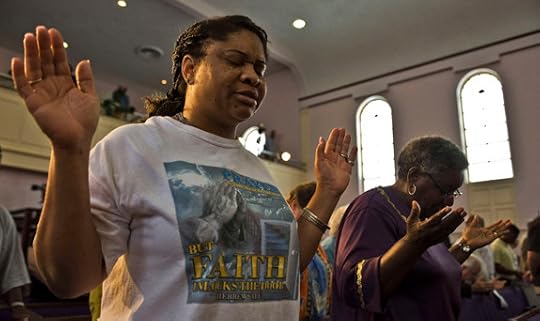
Beyond the Zimmerman Verdict | Deacon Harold Burke-Sivers | CWR
In the wake of the Travyon Martin case, African Americans have an opportunity to redirect their energies toward healing their families and communities.
The “not guilty”
verdict in the George Zimmerman trail for the death of Trayvon Martin has
unleashed a firestorm of criticism regarding gun violence, stirred deep
emotions over the enduring legacy of racism in America, and spawned senseless
acts of retaliatory violence. Without question, racism did play a role, in that Mr. Zimmerman profiled
Mr. Martin as a “person of color” in the “wrong” neighborhood at the “wrong”
time. If Mr. Zimmerman had significant
safety concerns or thought that Mr. Martin was acting suspiciously, he should
have called the police (which he did) and then went about his business as the
police investigated. I know what that
feels like, because it happened to me back in 1990. The police officer treated me like a criminal
until he found out I went to Notre Dame, which all of a sudden made my being
black OK in his eyes. My point is this:
if Mr. Martin were white, Mr. Zimmerman would have most likely ignored him and
the incident would never have occurred.
Despite the efforts
of Dr. Martin Luther King and the countless others who gave their hearts,
souls, and lives to the cause of justice, peace, and equality, racism remains
an evil that endures in our society.
This is not because Dr. King failed.
Racism persists in our country because of the existence of evil and
sin. “Racism is a sin; a sin that
divides the human family, blots out the image of God among specific members of
that family, and violates the fundamental human dignity of those called to be
children of the same Father. Racism is
the sin that says some human beings are inherently superior and others
essentially inferior because of race. It
is the sin that makes racial characteristics the determining factor for the
exercise of human rights. It mocks the
words of Jesus: ‘Treat others the way you have them treat you.’ Indeed, racism is more than a disregard for
the words of Jesus; it is a denial of the truth of the dignity of each human
being revealed by the mystery of the Incarnation” (U.S. Catholic Bishops
Pastoral Letter on Racism, Brothers and
Sisters to Us, 1979).
In this case, the profiling of Mr. Martin by Mr. Zimmerman was
racist. The jurors determined that Mr.
Zimmerman did not shoot Mr. Martin because he was black but in
self-defense. Whatever you think about
the outcome, the facts of this case and racism in America will be debated for a
long time to come.
I would like to draw attention to the incredible sense of outrage and
injustice that many black Americans have felt since the verdict, and the
mindless episodes of violent retaliation that have ensued. Many feel a misplaced sense of “righteous”
anger over this case and have taken it upon themselves to commit acts of
violence in the name of Trayvon Martin.
Rather than take our anger out on innocent people, I suggest that we
take this indomitable energy and redirect it toward strengthening black
families.
July 22, 2013
Hans Urs von Balthasar's "unique place among the great thinkers of the twentieth century"
The Imaginative Conservative site recently posted an excellent essay, "Uniting Faith and Culture: Hans Urs von Balthasar", by J. Peter Pham, which originally appeared a few years ago in Modern Age. It's worth reading in its entirety, but here is a representative excerpt:
The index to any one of Balthasar’s
books gives evidence of his erudition, even in areas which most
theologians would consider beyond their purview. He studied the message
of the great poets from Homer to Claudel, examining in between the works
of Dante, Calderón, Goethe, and Hölderlin, among others. In his search
for the tools to express the dramatic
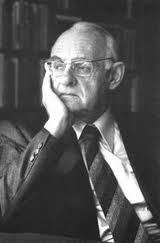
character of Christian revelation,
Balthasar delved into world theater from Sophocles to Ionesco. He
analyzed the works of painters like Dürer and Rouault and commented on
the music of Mozart, Mahler, and Schumann.
What characterized Balthasar’s
approach—and it could be said, as well, what characterizes the Western
civilization he embodied—was an openness to other voices even as he
concentrated on his own mission. Like a great composer, he succeeded in
harmonizing different voices and orchestrated his symphonic masterpiece.
(Not surprisingly, Balthasar once penned a little volume on Christian
pluralism entitled Truth is Symphonic.[11]) However, as Béguin
noted, “this dramaturgical talent—which calls, as always, for a setting
of the stage on the personal level as well as a setting on the level of
the common history of mankind—is unceasingly supernaturalized by the key
to his composition, which gives him his Christo-centrism.”[12] In fact,
whatever the object of his immediate theological attention, Balthasar
always returned to another object, the “Heart of the World,” which is
the second Person of the Trinity.[13] Like the great Church Fathers,
Balthasar’s openness to the riches of culture was rooted in his openness
to the Logos, the eternal Word of God, which is the ordering center of all the wisdom of the world.
Already in The Apocalypse, his
earliest work, Balthasar had developed a method of interpretation,
inspired by phenomenology, through which he could elucidate how the
German idealism of Kant, Hegel, Nietszche, and others evolved towards an
idea of the Absolute that was reduced, little by little, to the measure
of man. This phenomenological method was directed toward eliciting the
form that constitutes the center of inspiration in a developing idea. In
this regard, Balthasar repudiated the various schools of modern thought
which sought to separate form and content (the “great divorce” as C.S.
Lewis put it), such as the structuralism that arose from the linguistics
of Ferdinand de Saussure, which explicitly separated word from meaning,
a dichotomy that has been the driving force behind much of revisionist
history.
At the center of Balthasar’s own mission as interpreter of Western culture is the conviction that:
The Christian [does not] need to leave
his center in Christ in order to mediate him to the world, to understand
his relation to the world, to build a bridge between revelation and
nature, philosophy and theology….This is what the saints are fully aware
of. They never at any moment leave their center in Christ….When they
philosophize, they do so as Christians, which means as believers, as
theologians.[14]
Thus, unlike many contemporary
theologians, Balthasar was a champion of the saints, expending not
inconsiderable energies on analyses of the mysticism of Thérèse of
Lisieux, Elizabeth of the Trinity, and, of course, Adrienne von Speyr.
According to Balthasar, the tireless advocate of a praying theology (kniende-theologie), the saints alone, being caught up entirely by the divine word, are capable of speaking correctly about God.
Balthasar’s work as an interpreter of Western culture reaches its climax in the third volume of The Glory of the Lord, subtitled The Realm of Metaphysics,[15] which
deals with the historical evolution of the theme of the glory of God in
metaphysics. This work is particularly significant because of the
theological diagnosis which Balthasar elaborates concerning Western
culture and the challenges which it faces in the contemporary world from
feminism, environmentalism, relativism, and a host of other radical
iconoclastic movements.
Read the entire essay at TheImaginativeConservative.org. For more about von Balthasar, including a complete list of his books published by Ignaitus Press, visit the von Balthasar author page on Ignatius Insight.
“Humanae Vitae” and Sacred Scripture: A Missed Opportunity
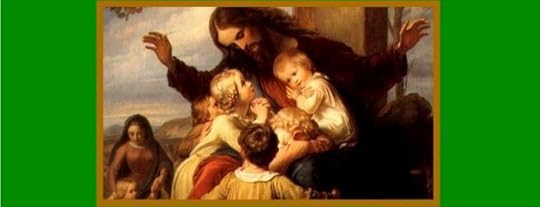
Humanae Vitae” and Sacred Scripture: A Missed Opportunity | Rev. Ray E. Atwood | HPR
While prophetic in many ways, the most controversial encyclical
of the twentieth century might have been better received had a stronger
biblical argument been made in its favor.
This July 2013 we commemorate the 45th anniversary of Pope Paul VI’s encyclical, Humanae Vitae
(Of Human Life). The encyclical presented some important doctrinal
principles (e.g., a total vision of man, four characteristics of love,
responsible parenthood, respect for the nature and purpose of the
conjugal act, the unitive and procreative dimensions of human sexuality)
and offered some prophetic warnings to those who disregard the Church’s
teachings in this area. It also issued some helpful pastoral directives
to Church leaders, public authorities, married couples, doctors, and
medical personnel. There is no question that Paul VI was right in his
conclusion that artificial contraception is, and always has been,
morally unacceptable. At that time, however, a change in the Church’s
teaching regarding contraception was highly anticipated in many
quarters.
Pope Paul’s birth control commission had issued a memorandum, dubbed a
“Majority Report,” in 1966, which argued for the morality of
contraception. If, the authors argued, a married couple was open to
human life in the “totality” of their conjugal life, it was morally
acceptable for them to use chemical or surgical techniques to prevent
birth. This document was leaked the next year, causing widespread
anticipation of a change in the Church’s moral stance. On the 19th
centenary of the Apostle Paul’s death (1967), the Holy Father declared a
“Year of Faith” and appealed for patient reflection on the matter. The
outpouring of anger, scorn, and contempt when the encyclical was
released in the summer of 1968 was tremendous. Part of the reason for
the widespread rejection of the encyclical, especially in academic
circles, could be that the Holy Father failed to make a more convincing
case for the traditional teaching. This article presents some biblical
passages that, if incorporated into the encyclical, would have made a
stronger argument for natural fertility regulation.
There are two problems with the presentation of Humanae Vitae, in the author’s opinion.
Mary Magdalene: Saint, Sinner, or Goddess?
Today is the feast day of Mary Magdalene, who is one of most misunderstood and misrepresented people in the New Testament, in part because of wild theories made wildly popular by Dan Brown. Below is an excerpt from The Da Vinci Hoax, which I co-authored with Sandra Miesel a few years ago; you can read more excerpts on Ignatius Insight. Also see this interview with Amy Welborn, who wrote a book about Mary Magdalene.
Chapter 2: The Magdalene: Saint, Sinner, or Goddess?
Any supposed attempts to rid the Church of Mary Magdalene or ban her name
from being mentioned did not succeed, simply because they didn’t
exist. In fact, many of the early Church Fathers remark about the Magdalene,
and she is described by Hippolytus (c. 170-c. 236) as "the apostle
to the apostles" in his commentary on the Song of Songs. Even feminist
theologian Rosemary Radford Ruether, hardly a supporter of the Catholic
hierarchy, scoffs at the notion of a conspiracy against Mary Magdalene,
pointing to the positive treatment she received from the early Church
Fathers:
"This high regard for Mary Magdalene continues in the fourth-
and fifth-century Latin fathers of the church. Ambrose, bishop of Milan,
associated Mary Magdalene with the New Eve who clings to Christ as the
new Tree of Life, thereby reversing the unfaithfulness of the first Eve.
Augustine maintains this view, pairing Mary Magdalene with Christ as symbol
of the New Eve and the church in relation to Christ as the New Adam. Her
faithfulness reversed the sin of the first Eve."
By the eighth century the Western Church was celebrating a feast day for
Mary Magdalene, the twenty-second day of July. By the ninth century there
were specific prayers for her feast day, and by the eleventh century there
was "a complete mass dedicated to the saint (with introit, gradual,
offertory, communion, and lessons)". It was also in the eleventh century
that devotion to the Magdalene began to noticeably increase. The cult of
Mary Magdalene was established at Vézelay, the Romanesque church
in Burgandy that had been founded in the ninth century and was originally
dedicated to the Virgin Mary. During the abbacy of Geoffrey (1037-1052)
Mary was recognized as the patron of that church in a papal bull dated April
27, 1050, by Pope Leo IX. At the same time, relics of the Magdalene were
being sought and gathered in earnest, and soon Vézelay became a major
destination for pilgrimages.
Numerous stories, almost all of them fanciful and legendary in nature, were
created to explain how Mary’s remains had arrived at Vézelay.
A leading tradition in the West held that Mary Magdalene, Martha, and Lazarus
were expelled from Palestine following the crucifixion of Christ. Floating
in an oarless boat, they eventually arrived at the southern coast of France.
In the East, a tradition stated that Mary had been the companion of the
Apostle John and Mary, the Mother of Jesus, and that they had all settled
in Ephesus. According to The Golden Legend, the Magdalene and John
were betrothed. Some legends depict Mary living her final days in a cave
in France, a hermit covered only by her long hair; these stories probably
date back no farther than the ninth century.
During the late medieval era it was common to hear sermons about Mary Magdalene
and how she fulfilled the apostolic life. She was also a model for Christians
seeking to leave behind a life of sensuality and luxury, an encouragement
to monks and nuns, as well as an exhortation to prostitutes. "But most
of all a Magdalene sermon was the vehicle by which preachers called people
to penance and offered them the hope of salvation. . . . We must not forget
that it is our own age that officially memorializes Saint Mary Magdalene
as a disciple; it was the ‘Dark Ages’ that honored her as a preacher
and apostle of the apostles."
July 21, 2013
Is Marriage Bigoted and Discriminatory?
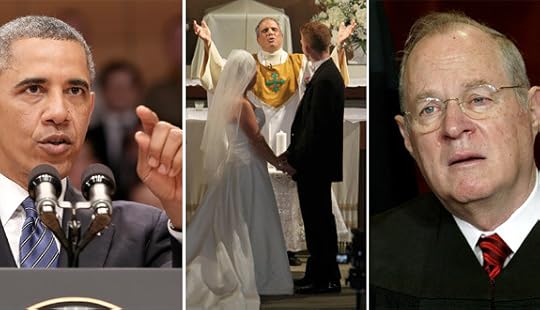
Is Marriage Bigoted and Discriminatory? | Dr. Patrick Lee | Catholic World Report
The President and members of the Supreme Court say "Yes". They are wrong.
Recently
both President Obama and members of the Supreme Court gave support to
the argument that the very idea that marriage is only between a man
and a woman—central to the Judeo-Christian belief about marriage,
as well as every culture on this planet up until recently—manifests
hatred and bigotry toward people with same-sex attractions. Writing
the majority opinion for the Supreme Court’s decision in US v.
Windsor last month, Justice Anthony Kennedy claimed that the
legislators who passed the Defense of Marriage Act (DOMA) in
1996—which defined for purposes of the federal government that
marriage is only between a man and a woman—must have intended to
“demean” and “injure” same-sex couples, and to “humiliate”
any children that they were raising. The next day President Obama
echoed these sentiments. DOMA, he said, “was discrimination
enshrined in law. It treated loving, committed gay and lesbian
couples as a separate and lesser class of people.”
This
strident campaign to redefine marriage will only become more intense
in the next few years. Catholics will be increasingly labeled as
bigots and hate mongers. And so we will face a choice: will we be
bullied by such accusations, and remain silent about what our faith
and reason tell us, or will we learn how clearly to articulate and
defend marriage in the public square?
The
marriage of Christians is both a Sacrament and a natural community;
it does not cease to be a natural union because it also involves a
Sacrament. For that reason, Catholics cannot ignore our culture’s
errors about marriage. To answer the charge of bigotry we must be
able to explain what marriage is and why it is a man-woman
relationship.
The state does not
create marriage. Marriage is a specific type of relationship or
community, having its own structure, and would exist whether the
state made any pronouncements about it or not. Marriage
exists in every culture--and the path toward marriage is similar
across cultures: a young man and woman fall in love and long to
be one with each other. The two spend time together, talk, play
games, share meals, and so on. They eventually desire to
be one with each other bodily--that is, sexually. They desire
this sexual union not merely for gratification, but to embody their
love and personal communion.
Continue reading on the CWR site.
July 20, 2013
Mary, Martha, and "the better part"
A Scriptural Reflection on the Readings for July 21, 2013, the Sixteenth Sunday in
Ordinary Time | Carl E. Olson
Readings:
• Gen 18:1-10a
• Ps 15:2-3, 3-4, 5
• Col 1:24-28
• Lk 10:38-42
Americans are, generally speaking, a
pragmatic and practical people. We know how to get things done, how
to organize, how to make a plan and put it into action. Work may be
“a rat race” and “a grind,” but we take satisfaction in
knowing we work hard, do a good job, and are productive members of
society.
But to what end?
By “end,” I mean
“ultimate end.” This question is pursued relentlessly and with
sometimes unsettling results in the little classic, Leisure: The
Basis of Culture (Ignatius Press, 2009), written in the 1950s by
the German philosopher, Josef Pieper. Western man overvalues work,
Pieper argued, and he has lost the meaning and importance of true
leisure, instead substituting shallow entertainment and empty
diversions. Leisure is essential to be whole, and the soul of leisure
is “divine worship” of the Creator. “Celebration of God in
worship,” writes Pieper, “cannot be done unless it is done for
its own sake.”
Hold that thought and cut away to the
dusty, first-century village of Bethany and the home of Martha and
Mary, the sisters of Lazarus. Jesus, having told his disciples of his
approaching suffering and death and having performed healings and
exorcisms (Lk. 9), was likely ready for a brief respite before
heading into Jerusalem, just two miles away. Martha was an exemplary
hostess. She believed, at the very least, that Jesus was a great
prophet, and she took pride in treating this friend and guest of
distinction to the finest care and food (note the clear parallels
with today’s reading from Genesis). And so Martha was busily
preparing and serving food, even while her sister, Mary, sat at the
feet of Jesus, listening to him speak.
What happened next was not an ordinary
part of Semitic culture and hospitality: Martha sought to draw Jesus
into the middle of a domestic disagreement. And she pulled out all of
the stops in doing so, employing the guilt trip (“Lord, do you not
care…”), playing the victim card (“that my sister has left by
myself…”), and employing the exasperated demand (“Tell her to
help me”). Things went from agreeable to awkward quickly!
I’ve heard the words of Jesus
interpreted sometimes as being a rebuke to Martha. But that is unfair
to Martha and it skews, or misses altogether, the essential point.
The Church Fathers are quite agreed on this point. St. Gregory the
Great, for example, wrote, “For what is set forth by Mary, who
sitting down gave ear to the words of our Lord, save the life of
contemplation? And what by Martha, so busied with outward services,
save the life of action? Now Martha's concern is not reproved, but
that of Mary is even commended.” He then arrived at this vital
conclusion: “For the merits of the active life are great, but of
the contemplative, far better.” Everything that Martha did was
good. Yet in pursuing good things, she overlooked the greatest good.
What was it? Mary, in sitting at Jesus’
feet, showed her submission to him. She literally “listened to his
word”; that is, she listened to the logos of the Logos.
She was completely and wholly present to the Incarnate Word; there
was no practical end to this being present, for it was simply an act
of love and worship. “To cling to God and to the things of God,”
wrote St. John Cassian, “this must be our major effort, this must
be the road that the heart follows unswervingly. Any diversion,
however impressive, must be regarded as secondary, low-grade and
certainly dangerous.” And St. Ambrose sums it up perfectly: “Do
not let service divert the knowledge of the heavenly Word.”
Mary, in choosing “the better part”
had made the right choice. She completely gave her attention and
herself to the Lord, fully aware of the Word of God present in flesh
and blood, and in spoken word. In so choosing, she gained what could
never be taken from her.
(This "Opening the Word" column originally appeared in the July 18, 2010, edition of Our Sunday Visitor newspaper.)
July 19, 2013
The Future of Liturgical Formation and Renewal
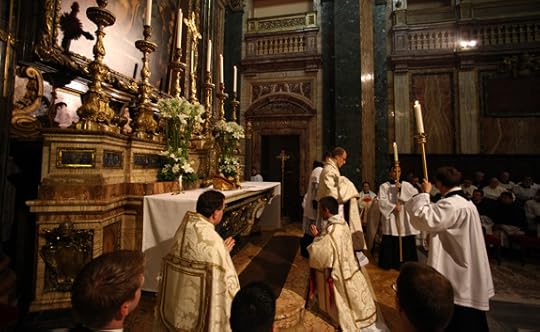
The Future of Liturgical Formation and Renewal | CWR Staff | Catholic World Report
An interview with Dom Alcuin Reid about Sacra Liturgia 2013
At the end of June more
than 300 people gathered in Rome from over 35 countries to participate in Sacra
Liturgia 2013, an international conference on liturgical formation, celebration
and the mission of the Church, convened by the bishop of Fréjus-Toulon, France,
Bishop Dominique Rey. CWR asked Sacra Liturgia 2013’s principal organizer, Dom
Alcuin Reid, about the conference and its impact.
CWR: This was a large international conference. Were
the organizers happy with how it unfolded?
Dom Reid: More than happy, yes. Practically speaking,
hiring the facilities of the Pontifical University of Santa Croce provided an
excellent venue in the heart of Rome and the warm welcome accorded us by the rector
of the adjacent Basilica of St. Apollinare gave us a beautiful environment in
which to celebrate the sacred liturgy together. Of course, organization can
always be improved, but I think we were able to provide delegates with a
conference well worth attending and which made a significant contribution to
the Year of Faith.
In terms of content
we were blessed with first-class speakers from beginning to end. We
deliberately varied the topics around different aspects of liturgical formation
and celebration and their relationship to the life and mission of the Church in
the 21st century so as to provide a wide-ranging “diet,” as it were. This was
not a conference for “sacristy specialists” or even necessarily for liturgical
experts. Rather it was for those wishing better to understand the unique and
fundamental role of the sacred liturgy in the life of the Church—an
understanding which his necessary for all of us if we are to form and evangelize
others.
CWR: Can you say something about the different
participants?
Dom Reid: Delegates came from more than 35 countries and
from very different backgrounds. Lay men and women involved in different
aspects of ministry in their parishes and dioceses, many priests of course,
religious men and women, as well as students and seminarians. Many of these
delegates were young—including one group of college students from the United
States who saved up to come—showing that the “question of the liturgy” is very
much alive for their generation. Some bishops and an abbot came as delegates in
order to further their own liturgical formation. So too there were a number of
professors of liturgy and liturgical formators from seminaries and universities
present. We also were honored by the participation of the ambassadors to the
Holy See of Great Britain, Australia, and South Korea.
Speakers too, came
from around the globe. Cardinal Ranjith came especially from Sri Lanka, and we
were fortunate that Archbishop Sample, Bishop Elliott, and Professor Rowland
were all in Rome for other engagements during that week and could join us.
Roman residents Cardinals Canizares, Burke, and Brandmueller, Msgr. Heid and Father
Gunter joined us. Bishop Aillet and Abbot Nault came from France, Msgr. Newton
and Father Lang from England, and others from Italy, Germany, Spain, and the
United States.
One thing that struck
me about the participants was the overall tone, particularly in the
discussions. There was no negativity or focus on past problems. Rather, it was
evident that all were looking forward with great hope and confidence to future
renewal in liturgical formation and celebration. In a way this encapsulates the
spirit of Sacra Liturgia 2013: no one present denied that there have been
serious liturgical problems in recent decades, but all were united in the
conviction that we must play our part in solving them. There was a tangible
spirit, a momentum, in the participants that will bear much fruit in the
future.
CWR: You spoke of problems that need to be solved.
In the ongoing reform of the liturgy, what still needs to be done, and how?
Carl E. Olson's Blog
- Carl E. Olson's profile
- 20 followers



